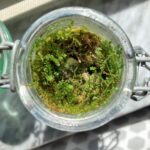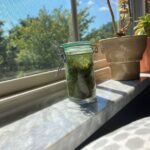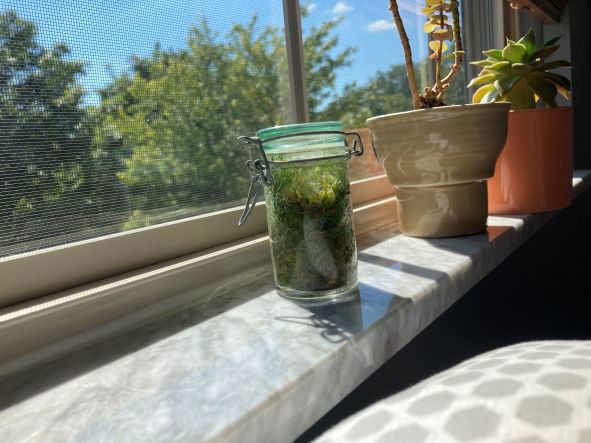By Adam Willis
 There’s something about a self-sustaining environment contained in glass that stimulates the imagination of both children and adults alike. When done correctly, a properly constructed terrarium can keep itself alive for years—decades, even—all without external support.
There’s something about a self-sustaining environment contained in glass that stimulates the imagination of both children and adults alike. When done correctly, a properly constructed terrarium can keep itself alive for years—decades, even—all without external support.
My interest in ecology first originated from a fascination with terrariums. When I was fourteen, I remember reading an article about a man who established a sealed terrarium in 1960—one of those comically large wine jugs seen in Italian restaurants—and, even after fifty years without watering, it was still filled to the brim with fresh vines. Stories like that inspire people like me, so I snatched a small jar from my mother’s pantry, stole a spade from the garage, and walked into the woods.
The formula I followed for my layers was a typical one: rocks at the bottom for drainage, a layer of mesh for separation, a layer of charcoal for filtration, and soil on top. I took a small patch of sphagnum moss from a decaying log and planted it in the background. In front, I placed two hollowed-out acorns in the center. I found a clover mite and a pill bug in a patch of decaying leaves; those went in too. I finished it off with water from a stream—just enough to make the soil damp. With that, I closed the lid, set it on my window sill, and forgot about it.
That was in 2016. Since then, I started high school, graduated high school, and completed my first year of college; it’s been almost six years and it’s still alive—the moss has nearly overtaken the soil.
I’ve had other terrariums that didn’t last as long, though. If it’s too damp, mold takes over. Too dry, the moss shrivels up and dies. But this one in particular has thrived. The clover mite and pill bug eventually died too, but they lived inside for a long time; the clover mite lived for two weeks (which coincides with their lifespan), and the pill bug lasted six months—not bad for a closed ecosystem without added food or water.
 To some people, the idea of a terrarium seems pretty neat; it’s an ecosystem with a complete water cycle, carbon cycle, nitrogen cycle, and oxygen production that fits in a bottle—a fascinating science project. But for me, that terrarium is a source of consistency—when life changes for me, I know it’s still on my window sill, following the natural flow. When I open it and breathe through my nose, it smells just like the forest—my bubble of freshness from when times get hard. When I mess up on a project, get rejected by a publishing company, or get a less than satisfactory grade in class, I look at that jar and I’m reminded that I can do something right—I made it, after all: a thriving ecosystem that I can hold in my hand, or tuck away in my backpack. It’s everything good—a pocket of nature.
To some people, the idea of a terrarium seems pretty neat; it’s an ecosystem with a complete water cycle, carbon cycle, nitrogen cycle, and oxygen production that fits in a bottle—a fascinating science project. But for me, that terrarium is a source of consistency—when life changes for me, I know it’s still on my window sill, following the natural flow. When I open it and breathe through my nose, it smells just like the forest—my bubble of freshness from when times get hard. When I mess up on a project, get rejected by a publishing company, or get a less than satisfactory grade in class, I look at that jar and I’m reminded that I can do something right—I made it, after all: a thriving ecosystem that I can hold in my hand, or tuck away in my backpack. It’s everything good—a pocket of nature.






